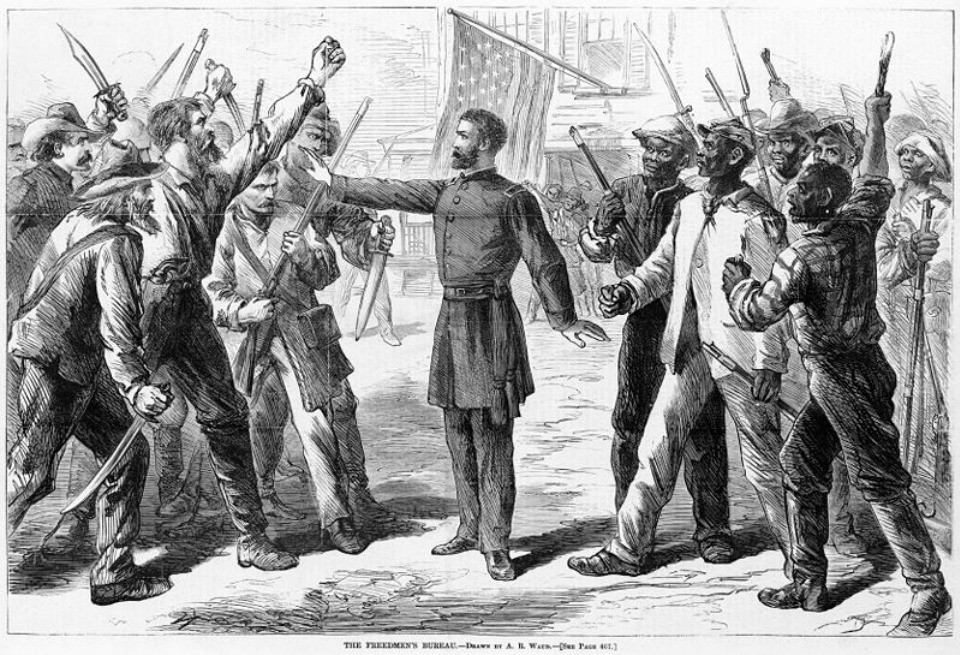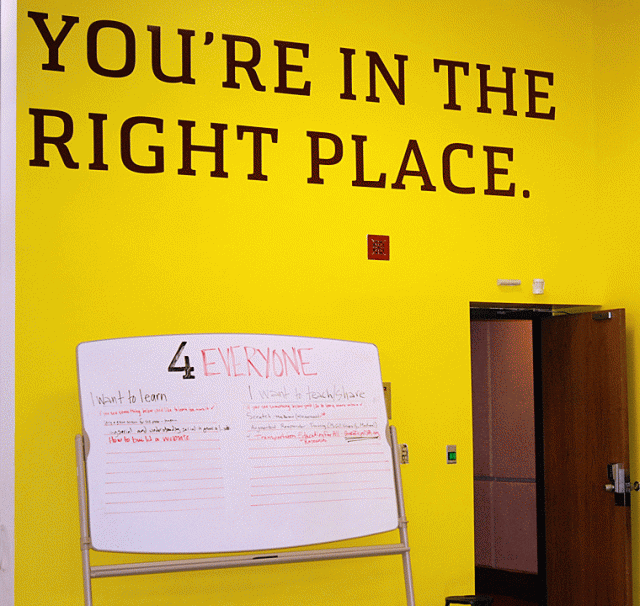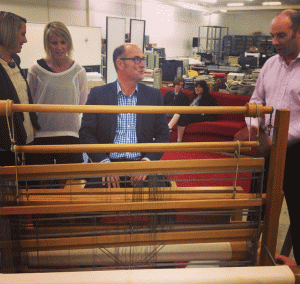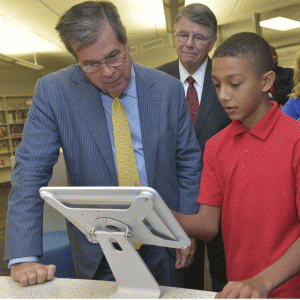BY Kali Holloway, AlterNet
Salon
4 March 2015
This article originally appeared on AlterNet.
AlterNet - If there’s anything our fraught national dialogue on race has taught us, it’s that there are no racists in this country. (In fact, not only do multiple studies confirm that most white Americans generally believe racism is over — just 16 percent say there’s a lot of racial discrimination — it turns out that many actually believe white people experience more discrimination than black people.) It’s a silly idea, of course, but it’s easy to delude ourselves into thinking that inequality is a result of cultural failures, racial pathology and a convoluted narrative involving black-on-black crime, hoodies, rap music and people wearing their pants too low. To admit that racism is fundamental to who we are, that it imbues our thinking in ways we wouldn’t and couldn’t believe without the application of the scientific method, is infinitely harder. And yet, there’s endless evidence to prove it.
For those who recognize racism is real and pervasive, it’s also comforting to believe that discrimination is something perpetuated by other people, overlooking the ways we are personally complicit in its perpetuation. But fruitful conversations about race require acknowledging that racism sits at the very core of our thinking. By something akin to osmosis, culturally held notions around race mold and shape the prejudices of everyone within the dominant culture. People of color unwittingly internalize these notions as well, despite the fact that doing so contributes to our own marginalization. Most of us know the destructive outcomes systemic racism produces (higher rates of poverty, incarceration, infant mortality, etc.). Accepting that implicit bias is happening at every level makes it awful hard to chalk those issues up to black and brown failure.
Here’s a look at just some of the ways our internalized biases add up to devastating consequences for lives, communities and society.
1. College professors, across race/ethnicity and gender, are more likely to respond to queries from students they believe are white males. Despite universities frequently being described as bastions of progressivism and liberal indoctrination centers, a recent study found that faculty of colleges and universities are more likely to ignore requests for mentorship from minority and/or female students. Researchers sent more than 6,500 professors at 259 schools in 89 disciplines identical letters that differed only in the name and implied race/gender of the fictitious student sender (e.g., “Mei Chen” as an Asian female; “Keisha Thomas” as a black female; “Brad Anderson” as a white male). The study found that regardless of discipline (with the sole exception of fine arts), faculty more consistently responded to perceived white males. Two notable additional findings: 1) professors at public institutions were significantly more likely than their private institution counterparts to respond to students of color, and 2) the students most discriminated against were perceived East Asian women, followed by South Asian men. You can look at the numbers up close here.
2. White people, including white children, are less moved by the pain of people of color, including children of color, than by the pain of fellow whites. Three distinct studies support this finding. The first found that around age 7, white children began to believe black children are less susceptible to pain than white children. Another study found that emergency room personnel are less likely to give African American and Latino/Hispanic children pain medication, even when they are experiencing severe abdominal pain. The same study also found that even when the same tests are ordered, black and Hispanic children face significantly longer emergency room stays. A third study found that white people feel less empathy toward black people in pain than they do for whites experiencing pain.
3. White people are more likely to have done illegal drugs than blacks or Latinos, but are far less likely to go to to jail for it. A 2011 study from the Substance Abuse and Mental Health Data Archive found white people were more likely to use illegal and prescription opiates (heroin, oxycontin), hallucinogens, and cocaine than blacks and Hispanics by significant margins. Black people just edged out white people on marijuana and crack use (which incurred disproportionate sentences for decades). Yet, a 2009 Human Rights Watch study found that each year from 1980 to 2007, blacks were arrested on drug charges at rates 2.8 to 5.5 times higher than whites.
4. Black men are sentenced to far lengthier prison sentences than white men for the same crimes. A 2012 study by the United States Sentencing Commission found black men were sentenced to prison terms nearly 20 percent longer than white men for similar crimes. To break those numbers down further, from January 2005 to December 2007, sentences for black males were 15.2 percent longer than those of their white counterparts. From December 2007 to September 2011, that number actually increased, with differences in sentencing growing to 19.5 percent.
5. White people, including police, see black children as older and less innocent than white children. A UCLA psychological study surveyed mostly white, male police officers to determine “prejudice and unconscious dehumanization of black people.” Researchers found a correlation between officers who unconsciously dehumanized blacks and those who had used force against black children in custody. The study also found that white female college students saw black and white children as equally innocent until age 9, after which they perceived black boys as significantly older — by about four and half years — and less innocent than their white peers. UCLA researcher Phillip Atiba Goff wrote, “Our research found that black boys can be seen as responsible for their actions at an age when white boys still benefit from the assumption that children are essentially innocent.” Which leads right to our next stats.
6. Black children are more likely to be tried as adults and are given harsher sentences than white children. A Stanford University study uncovered this sobering information: ”[S]imply bringing to mind a black (vs. white) juvenile offender led [white study] participants to view juveniles in general as significantly more similar to adults in their inherent culpability and to express more support for severe sentencing.” That is, when white respondents thought the child on trial was black, they were more like to endorse “sentencing all juveniles to life without parole when they have committed serious violent crimes.” That might explain why, of the roughly 2,500 juveniles in the U.S. who have been sentenced to life without parole, nearly all (97 percent) were male and (60 percent) black. Interesting study note: for black kids, killing a white person was a good way to end up behind bars for their entire adult life. For white kids, killing a black person actually helped their chances of ensuring their prison stay would be temporary. From the report: “[T]he proportion of African American [juveniles sentenced to life without parole] for the killing of a white person (43.4 percent) is nearly twice the rate at which African American juveniles overall have taken a white person’s life (23.2 percent). What’s more, we find that the odds of a [juvenile life without probation] sentence for a white offender who killed a black victim are only about half as likely (3.6 percent) as the proportion of white juveniles arrested for killing blacks (6.4 percent).”
7. White people are more likely to support the criminal justice system, including the death penalty, when they think it’s disproportionately punitive toward black people. That’s right: white people agree with criminal justice outcomes more when they think race disproportionately targets black people for incarceration. According to a 2012 Stanford study conducted in “liberal” San Francisco and New York City, when white people were told that black people were unfairly impacted by punitive criminal justice policies like three-strikes laws and stop-and-frisk, they were less likely to advocate for criminal justice reform. In a similar vein, researchers found in 2007 that telling whites about racist sentencing laws made them favor harsher sentences. That is, racism made them like those sentences more. The study authors write: “[O]ur most startling finding is that many whites actually become more supportive of the death penalty upon learning that it discriminates against blacks.”
8. The more “stereotypically black” a defendant looks in a murder case, the higher the likelihood he will be sentenced to death. This is perhaps one of the most horrifying findings in a list of horrifying findings. To quote the study, “the degree to which the defendant is perceived to have a stereotypically black appearance (e.g., broad nose, thick lips, dark skin)” could mean the difference between a sentence of life or death, particularly if his victim was white. Read the whole study; it’s fascinating.
9. Conversely, white people falsely recall black men they perceive as being “smart” as being lighter-skinned. Here’s another incredible, though not entirely surprising study finding. When white people encounter the faces of African American men they are primed to believe are “educated,” they later recall those individuals as being lighter-skinned than they actually were. The researchers developed a name for this phenomenon: “skin tone memory bias.” This compulsion was chalked up to stereotypical beliefs about dark skin and its correlation with negative traits. To reckon with the cognitive dissonance created by perceiving a black man as “educated,” white participants unconsciously realigned that intelligence with skin that more closely approximated whiteness.
10. A number of studies find white people view lighter-skinned African Americans (and Latinos) as more intelligent, competent, trustworthy and reliable than their darker-skinned peers. A 2006 study found that dark-skinned black men with MBAs were less likely to be hired than lighter-skinned black men who only possessed bachelor’s degrees. A 2010 study in North Carolina found that light-skinned black women received shorter prison terms than darker-skinned black women. And a 2012 Villanova University study found that, “African American and Latino respondents with the lightest skin are several times more likely to be seen by whites as intelligent compared with those with the darkest skin.”
The implications of these findings are hugely significant, and lend credence to the often expressed feeling of tokenization by black people who are deemed smart, successful or intelligent by whites. That is, the feeling that white people perceive certain African Americans as exceptional or “not like the others.” It also adds an important layer to the conversation around colorism, which privileges light skin above darker skin both within and outside of communities of color. (And has helped skin lightening products become a booming global industry in places like India, the Philippines and some parts of Africa.)
Unfortunately, I could go on and on. About how, for example, black students — even preschoolers — are far more likely to be suspended from school than white students. (That fact is even truer for dark-skinned black students.) The same products, when displayed by black hands on the Internet, are less likely to sell than when they are held by white hands. One study even found that white people basically think black people are paranormal entities, an idea so ludicrous it begs that you read an explanation, here.
Racism is comfortable and easy; it helps us make quick, baseless decisions without the taxing act of thinking. The next time you catch yourself having a racist thought or feeling, try not brushing it off. Ask yourself where it came from, what it means and how you can unpack it. Because if the evidence above suggests anything, it’s that critical self-examination is our only hope of moving the needle at all on this thing. Stop imagining that being racist is something that only other people do, and start looking closely at your own beliefs.
Especially the ones you’ve never admitted to yourselves that you hold.
Last
week, a zombie went to New Hampshire and staked its claim to the
Republican presidential nomination. Well, O.K., it was actually Gov.
Chris Christie of New Jersey. But it’s pretty much the same thing.
You see, Mr. Christie gave a speech
in which he tried to position himself as a tough-minded fiscal realist.
In fact, however, his supposedly tough-minded policy idea was a classic
zombie — an idea that should have died long ago in the face of evidence
that undermines its basic premise, but somehow just keeps shambling
along.
But
let us not be too harsh on Mr. Christie. A deep attachment to
long-refuted ideas seems to be required of all prominent Republicans.
Whoever finally gets the nomination for 2016 will have multiple zombies
as his running mates.
Start
with Mr. Christie, who thought he was being smart and brave by
proposing that we raise the age of eligibility for both Social Security
and Medicare to 69. Doesn’t this make sense now that Americans are
living longer?
No,
it doesn’t. This whole line of argument should have died in 2007, when
the Social Security Administration issued a report showing that almost
all the rise in life expectancy
has taken place among the affluent. The bottom half of workers, who are
precisely the Americans who rely on Social Security most, have seen
their life expectancy at age 65 rise only a bit more than a year since
the 1970s. Furthermore, while lawyers and politicians may consider
working into their late 60s no hardship, things look somewhat different
to ordinary workers, many of whom still have to perform manual labor.
And while raising the retirement age would impose a great deal of hardship, it would save remarkably little money. In fact, a 2013 report from the Congressional Budget Office found that raising the Medicare age would save almost no money at all.
But Mr. Christie — like Jeb Bush, who quickly echoed his proposal — evidently knows none of this. The zombie ideas have eaten his brain.
And there are plenty of other zombies out there. Consider, for example, the zombification of the debate over health reform.
Before
the Affordable Care Act went fully into effect, conservatives made a
series of dire predictions about what would happen when it did. It would
actually reduce the number of Americans with health insurance; it would lead to “rate shock,”
as premiums soared; it would cost the government far more than
projected, and blow up the deficit; it would be a huge job-destroyer.
In reality, the act has produced a dramatic drop in the number of uninsured adults; premiums have grown much more slowly than in the years before reform; the law’s cost is coming in well below projections; and 2014, the first year of full implementation, also had the best job growth since 1999.
So
how has this changed the discourse? On the right, not at all. As far as
I can tell, every prominent Republican talks about Obamacare as if all
the predicted disasters have, in fact, come to pass.
Finally,
one of the interesting political developments of this election cycle
has been the triumphant return of voodoo economics, the “supply-side”
claim that tax cuts for the rich stimulate the economy so much that they
pay for themselves.
In
the real world, this doctrine has an unblemished record of failure.
Despite confident right-wing predictions of doom, neither the Clinton
tax increase of 1993 nor the Obama tax increase of 2013 killed the
economy (far from it), while the “Bush boom” that followed the tax cuts
of 2001 and 2003 was unimpressive even before it ended in financial
crisis. Kansas, whose governor promised a “real live experiment” that would prove supply-side doctrine right, has failed even to match the growth of neighboring states.










